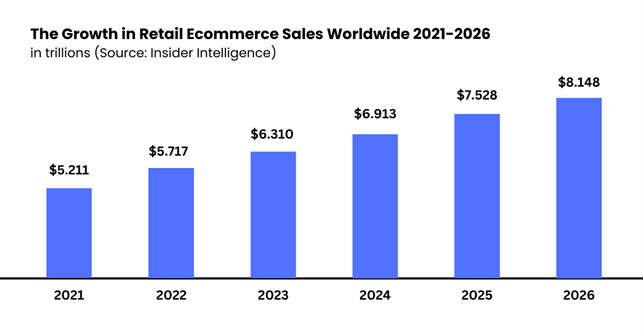In a world where online shopping and social media are continuously becoming more and more relevant, many brands are turning to a direct-to-consumer (DTC) sales strategy. Here is how they effectively use social networks for consumer promotion and brand growth.

A new business model is gaining prominence in today's CPG landscape: Direct-to-consumer (DTC). As the name says, brands sell directly to their consumers in a DTC strategy, cutting out third-party distributors to regain control over distribution channels, strengthening customers' relationships, and increasing profit margins. Even if some DTC brands have adopted a hybrid approach to distribution, opening their own permanent or temporary retail stores, most sales still happen online. Could it be the next big opportunity for CPG brands?
While many believe DTC is an indispensable part of an efficient sales model, implementing it is easier said than done. When shifting to a Direct To Consumer sales strategy, brands face several challenges:
- Unless the brand is established and well-known, there is no existing audience.
- When employing a DTC model, the brand is fully responsible for its sales process and marketing and promotion strategy.
- It might be that consumers are more loyal to the third-party distributor than to the brand. In this case, the company needs to build strong brand loyalty to ensure long-term profit.
- If brands want to sell directly to consumers, they must be present where they are.
These setbacks all have one thing in common: they can be tackled with a strong social media strategy.
Why use Social Networks for DTC Retail Media Strategy?
Social media and online shopping have completely transformed how customers make purchases, especially in a rapidly changing industry like CPG.
In 2022, worldwide retail e-commerce sales reached $5.717 trillion and are forecasted to grow to $8.148 trillion in 2026.

Industry surveys and CPG analytics on purchase data tell us that 79% of shoppers shop online once a month, giving us precious insights into consumers' routines: for many, online shopping is now a habit they perform regularly, and they turn to the Internet every time they have a purchase in mind.
Let's have a look at what reports have to say about social media usage.
- 96 million people in the US alone shop on social media, and this number is expected to grow to 114.3 million;
- 49% of social media shoppers have purchased because of an influencer's recommendation;
- Social media influence is especially strong when it comes to consumer packaged goods.
Such insights clearly state the prominence of online and social media shopping and how good social strategies can help a brand reach more consumers and influence purchase behaviors. If you want to attempt a direct-to-consumer (DTC) campaign, including social networks in your strategy is crucial.
How DTC Brands are using Social Networks for growth
The impact of Social Networks on modern shopping habits is undeniable, and it becomes particularly important for brands wanting to switch to DTC.
And in fact, 61% of all DTC brands mentioned social media as their number one conversion channel.
Here are some practical strategies to reach more consumers and build strong relationships through social networks.
Use personalization marketing when setting up a direct-to-consumer (DTC) campaign
Personalization is the future of marketing: according to Google, 90% of leading marketers believe personalization significantly contributes to their business' profitability. You need to know your customers well, to personalize your strategy and CPG analytics can help you. By analyzing data and providing valuable consumer insights, analyzing consumer data improves your targeting and segmentation capabilities, allowing you to create efficient clusters and address them with personalized marketing strategies.
When setting up your campaign, don't forget to be consistent across channels and ensure a good user experience by providing a clickable CTA. If your focus is mainly consumer promotion, your CTA must land on a purchase page.
Create an authentic experience
On social media, brands should be and feel real and spontaneous. There's a reason why Merriam-Webster's word-of-the-year in 2023 was "Authentic.” With the rise of AI in every industry, including CPG, consumers are more wary of inauthentic messaging than ever before. And according to The Sprout Social Index™, consumers would like to see more non-promotional content from brands on social media.
But how can brands deliver an authentic customer experience on the right platform at the right time? Consumer analytics conducted on social media data can help hone efforts and investments into the right channel for the selected target audience. Brands can also improve their analytics capabilities with CPG AI to collect and analyze vast amounts of data and extract consumer insights.
Focus on addressing consumer pain points
This is a consequence of the previous point on authenticity. Your Retail Media Strategy should feel human and focused on consumers’ needs and wants, and the content you create should be helpful and interesting for them: nowadays, consumers don’t want their scrolling interrupted by a cold, self-centered ad.
So, instead of focusing on brand-centric or product-centric social media content, ask yourself what problems your customers have and how your product can solve them. Create a narrative around consumers’ pain points to engage with them, and then offer your solution.
Make sure your customer service is excellent
Today, even on social media, customer experience is expected to be flawless. According to a recent study,
For 51% of consumers, responding to users’ comments and messages on social media is the best way for a brand to be memorable.
And the interesting statistics don’t stop here:
- 70% of respondents expect personalized answers;
- 67% value how quickly a brand answers;
- 30% expect a response on the same day, and 16% expect a response within minutes.
But how do you keep up with these increasingly demanding expectations? For brands wanting to prioritize customer service, CPG AI may prove to be the key. According to Deloitte, an AI strategy focused on assisting customers and interacting with their questions may be the most effective consumer promotion method. Artificial Intelligence in consumer goods can be used to power chatbots, collect post-sales feedback, and analyze them to get consumer insights. Remember, however, what we said about the importance of authenticity, and make sure to add some human touch to your customer service.
Social media as a way to build authentic relationships with your audience: the lesson from DTC brands
While the future of CPG brands might be DTC, the insights and strategies shared in this article are also relevant for brands relying on third-party distributors. DTC brands are teaching the industry an important lesson about the value of social networks and how they can be used in a more authentic, personalized, and powerful way to drive growth and increase brand loyalty.
CPG companies must understand two lessons to step up their game. On the one hand, CPG AI allows impactful campaigns built on data-driven solutions and valuable consumer insights. On the other hand, brands should remain authentic and human and focus on their first-hand relationships with customers. This continuous integration of AI, analytics, and human touch can drive exponential values for the companies able to achieve it.

No comments yet